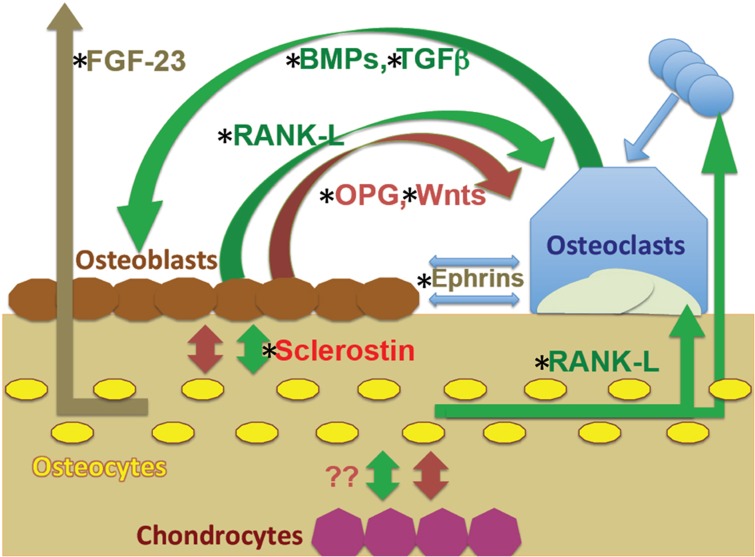Figure 1.
Interactions between cells of the osteoblast and osteoclast lineages, including osteocytes and possible role of chondrocytes. The regulatory pathways between osteoblasts and osteocytes and osteoclasts include multiple negative (red) and positive (green) feedback loops as indicated; all potentially modifiable by 1,25(OH)2D3. These include release of matrix components, such as transforming growth factor-β (TGFβ) and bone morphogenetic proteins (BMPs) that influence osteoblast activity, and humeral factors that influence mineral homeostasis at distant sites, such as fibroblast growth factor (FGF)-23 on renal phosphate handling. Given these loops, any regulatory effect on one cell type can influence the others. Chondrocyte effects on surrounding cells are also potentially involved. The complexity of these inter-relationships may explain the differential effects of 1,25(OH)2D3 in driving anabolic and catabolic outcomes. RANKL, receptor activator of nuclear factor-κB ligand.

